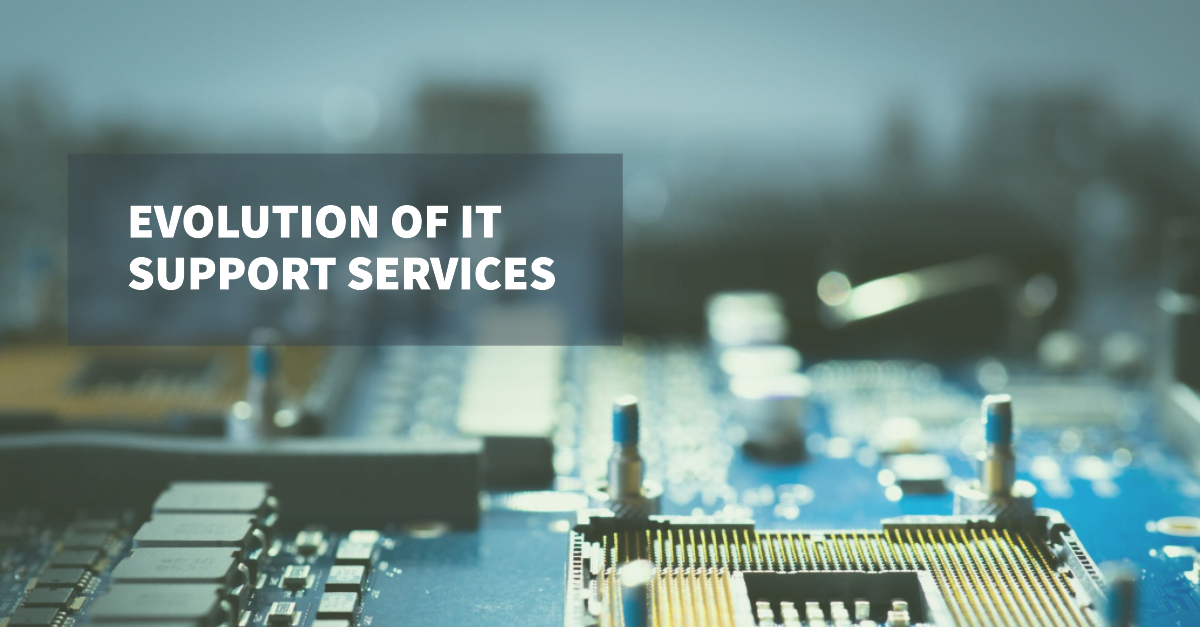
The Evolution of IT Support: A Historical Perspective
The history of IT support services serves as a fascinating roadmap, tracing the technological advancements that have shaped our world. From its early days as a specialised field focused solely on hardware maintenance to its current role as the backbone of modern businesses and organisations, IT support has undergone a transformative journey. This guide aims to explore the history of IT support services in depth, offering you valuable insights into its past, present, and future. So, fasten your seatbelts as we embark on a time-traveling adventure through the annals of IT support.
What is the History of IT Support and Where is it Going?
The inception of IT support can be traced back to the early days of computing, where mainframe systems required specialised technicians to maintain them. As technology evolved, so did the role of IT support, transforming from a reactive service to a proactive solution (Source).
The Role of IT Support in the Early Days
In the beginning, IT support was primarily focused on hardware maintenance and troubleshooting. The concept of software support was almost non-existent, as most software was custom-built for specific tasks.
The Transformation Over the Years
With the advent of personal computing and the internet, IT support expanded its scope to include software troubleshooting, network management, and cybersecurity.
From Many Specialists to General IT Technicians
The Era of Specialised IT Roles
In the early 2000s, IT support was highly specialised. You had network engineers, database administrators, and hardware specialists, each focusing on a narrow aspect of IT.
The Shift Towards General IT Technicians
However, the rise of cloud computing and Software as a Service (SaaS) led to a shift towards general IT technicians capable of handling a variety of tasks (Source).
The Impact on Businesses and Services
This shift has allowed businesses to streamline their IT departments, leading to cost savings and more efficient operations.
IT-as-a-Service
The concept of IT-as-a-Service (ITaaS) has revolutionised the way businesses perceive and utilise IT support. ITaaS allows companies to outsource their IT needs, turning fixed costs into variable expenses (Source).
Benefits and Challenges
While ITaaS offers scalability and flexibility, it also poses challenges in terms of data security and compliance.
Future Trends in IT-as-a-Service
Experts predict that the future of ITaaS will involve greater integration of artificial intelligence and machine learning to automate routine tasks (Source).
A Brief History of Tech Support
The Early Days
Tech support, in its earliest form, was often a one-man operation where the “computer guy” would fix everything from hardware issues to minor software glitches.
Milestones in Tech Support History
The introduction of help desks, ticketing systems, and remote support marked significant milestones in the evolution of tech support (Source).
How Tech Support Shaped the IT Industry
Tech support has played a crucial role in shaping the IT industry, setting standards for customer service and problem resolution.
Fast Forward: The Modern Era
The Age of Automation and AI
Automation and AI have significantly impacted the IT support landscape, enabling faster resolution of issues and freeing up human resources for more complex tasks (Source).
The Role of Cloud Computing
Cloud computing has simplified IT support by centralising resources and enabling remote troubleshooting (Source).
The Impact of Cybersecurity
With the increasing number of cyber threats, IT support now plays a crucial role in implementing and maintaining security protocols (Source).
Present Day: Where We Stand
Today, IT support is a multifaceted field that encompasses everything from network management to cybersecurity and data analytics. The role of IT support has never been more critical, especially in the era of big data and IoT (Source).
The Future of Help Desks and IT Support
The Evolving Role of Help Desks
Help desks are evolving to become more than just a point of contact for troubleshooting; they are turning into hubs for customer engagement and analytics (Source).
The Integration of AI and Machine Learning
AI and machine learning are set to revolutionise help desks and IT support, making them more efficient and customer-centric (Source).
Future Challenges and Opportunities
As technology continues to evolve, IT support will face new challenges, including managing increasingly complex networks and data privacy complexities.
Conclusion
Understanding the history of IT support services allows us to appreciate the complexities and advancements that have shaped this essential field. As we look to the future, it’s clear that IT support will continue to evolve, offering new challenges and opportunities.
